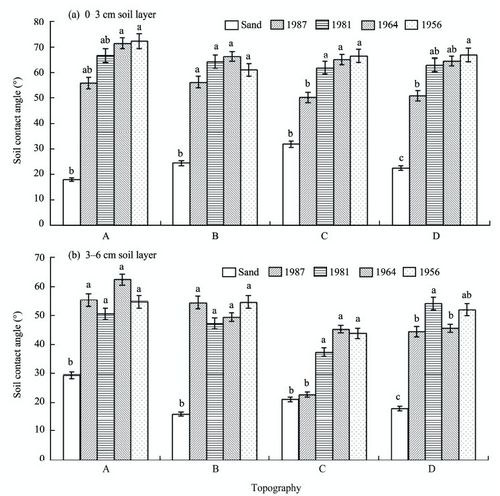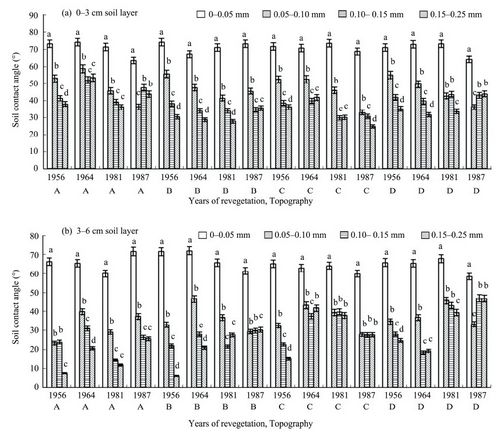Characteristics of soil water repellency after sand dune stabilization in the Tengger Desert
Updatetime:2013-03-05From:
【Enlarge】【Reduce】
Soil water repellency (SWR) is one of the most important physical properties of soils found all over the world, and it may have significant effects on the eco-hydrological processes of land ecosystems. In this study, the Capillary Rise Method was used to measure the SWR in the artificial vegetation area in Shapotou, located in the southeast area of the Tengger Desert, Ningxia Province of western China. The variation of the soil water repellency among different minor topographies, different depths and different particle sizes was analyzed. The results of the study indicate that the SWR shows distinct changes with vegetation restoration,and it increases with an increase in the period of dune stabilization. In the same vegetation area, the SWR of soils in inter-dune depressions or windward slopes is slightly greater than that in crest or leeward slopes. The SWR of 0–3 cm topsoil is significantly greater than that in the 3–6 cm soil layer. The SWR decreases with an increase in grain size and the differences among the SWRs of different sieved soil fractions are found to be significant. There is also a significantly positive correlation between the SWR and the proportion of soils with grain sizes of 0–0.05, 0.05–0.01 and 0.01–0.15 mm, and a significantly negative correlation between the SWR and the propotion of soils with grain sizes exceeding 0.15 mm. The increase of SWR in revegetation areas may depend on the continuous depositing of atmospheric dust on the stabilized dune surface as well as the formation of biological soil crusts,especially on the formation of algal and lichen crusts. Enhanced SWR influences the effectiveness of water use of sand plants inhabiting the sand dunes.
More than 50 years after the artificial sand-fixing vegetation was established in Shapotou, an artificial vegetation system has gradually evolved into a natural system, the physical and chemical properties of the surface soil in this area have continued to change, the texture has been gradually fine grained, and organic matter content has gradually increased. At the same time, the SWR in the vegetation areas is significantly greater than that in the quicksand area. SWR shows an increasing trend with the expansion of establishment period of vegetation; the SWR of fixed inter-dune lowlands and windward slope in the vegetation areas is greater than that of tune top and leeward slope, and the water repellency of the soil layer of 0–3 cm is significantly greater than that of the soil layer of 3–6 cm. With an increase in soil grain,SWR continues to decrease. There is a significantly positive correlation between SWR and the percentage content of soil grain of less than 0.15 mm, and a significantly negative correlation between SWR and the percentage content of soil with grain sizes of 0.15–0.50 mm. The continuous colonization and development in the area, as well as the constant input of sand-fixing organic matter, are the most important causes of SWR here.

The variation of soil water repellency (Mean±SD) with different revegetation ages at depth of 0–3 and 3–6 cm for four topographies:(A) inter-dune lowland, (B) windward slope, (C) crest and (D) leeward slope.

The variation of soil water repellency (Mean±SD) of different particle size with different revegetation ages and topographies at depth of 0–3 and 3–6 cm: (A) inter-dune lowland, (B) windward slope, (C) crest and (D) leeward slope.
Appendix





